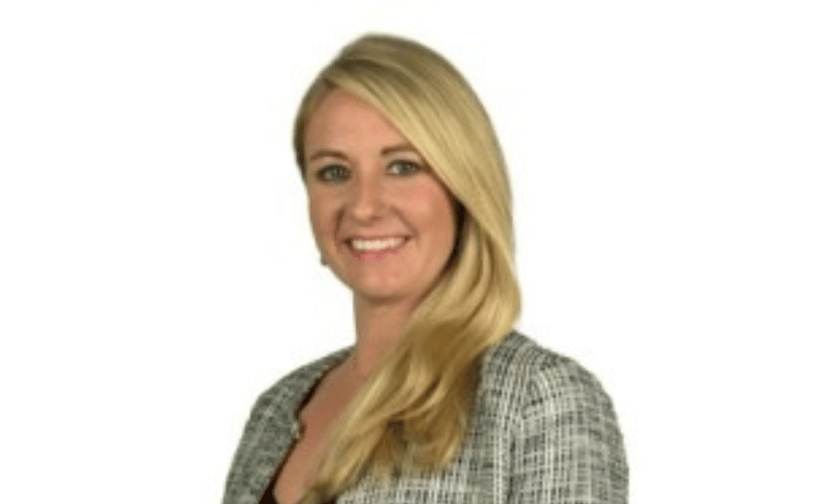

Catherine French (pictured), risk management placement leader for Marsh has a clear message for the insurance and risk management marketplace – “we’re all entering an unknown in some way, shape, or form. So don’t leave people out there on their own”.
Working to find solutions for some of Marsh UK’s largest and most complex clients, French and her team have seen first-hand the appetite of these businesses to work with insurance partners who understand the challenge that is navigating today’s complex risk landscape. Digging into these challenges, she looked first to what’s happening with regards to the rate environment – as it moves from the hardening position of recent years to a downward trend in rate.
She noted that a key area of concern raised by clients in certain lines of business, for example, in financial lines and more recently in cyber, is how they’re being prepared to try to explain what’s happening with regards to rate. It’s difficult for these clients to be able to report internally on how the market’s evolving, she said, as they have had to expend significant effort to equip themselves to explain rapid rate increases to their boards, and now, just a year or two later, they’re having to have exactly the opposite conversations.
“It’s very difficult for clients who are not in the insurance market consistently to have that credibility to explain to senior management why things are so up and down at such quick intervals”, she said. “Especially when, in theory, the market hasn’t really changed and losses are still happening.
“It comes down to the nature of the cycle and how as more competition and more new entrants come in, we’re back into the position of softer rates. But that remains one of the things they’re struggling with – how to talk to those within businesses that aren’t insurance facing about the credibility of the insurance market, when there is such a rapid change in rate on certain lines of business.”
Addressing how she and her team work to empower their clients to have the right internal conversations about insurance and risk, French highlighted that it all comes down to having the right communication and, crucially, the right consistency of communication. From quarterly client counsels, to market updates, to in-depth reports, the emphasis is on data and communication – and on ensuring that this is packaged in a highly accessible format.
“Our focus in every client meeting is on ensuring that the right level of understanding is there,” she said. “We also have our global insurance index report which again gives a really good view of what’s happening by summarising all the placements that Marsh handled globally which gives a view of the average rate.
“And then this can be broken down by region, by product line to provide the intel to explain what data has fed into that. So why are rates going down in one region and not another? What’s the rationale behind these rate changes? And all that is provided in a way that’s user-friendly and easy to translate.”
Another challenge facing clients in the £500 million in turnover (and up) space that French and her team support is steering through the rapid shifts occurring in the external risk landscape. The rate and pace of innovation and the opportunities that provides are being considered by clients all the time, she said, but they also recognise the increased risks and challenges this can bring.
Take, for example, the increasing popularity of electronic vehicles, she said, not least because of the potential they represent to help reduce emissions. But electric vehicles are a lot more expensive than internal combustion engines, with repair costs 25% higher on average while repair times are also longer due to the increased complexity and intricacy of electric vehicles’ engineers.
“It's all adding to being in a situation where, although we're following innovation, it's actually a risk to insurers,” she said. “And are they are they coming along at the pace required to assist our clients? Another example is natural catastrophes and the increase that we've seen in wildfires and hurricanes, which is due to all different kinds of weather-related losses and volatility.
“And insurers are either amending their rates, increasing their rates, or pulling out of covering certain geographic areas. Again, the root of this is climate change and the need for us globally to have alternative energy sources. But insurers have been really slow to offer coverage when clients have come to us with energy project ideas or innovative ways they want to move forward. It’s the balance of needing to move forward but insurers are still looking behind, and are still slightly averse to coming along that journey.”
French warned that is the coverage gap being created by this approach which stemming investment in the broader energy transition. It’s easy for the insurance market to talk about ESG and climate change and how to move forward, she said, but it needs to be part of the solution. So, the opportunity facing insurers today is to become an integral part of the solution that bridges that coverage gap by partnering with innovative businesses.
“My hope is that insurers join this journey,” she said. “Because, I do think that as we get into this softer space, it’s about everybody in the market looking to grow which means is about how you differentiate yourselves. And what I would ask insurers to do is use this differentiation to partner with clients on their journeys of innovation, rather than look backwards. Let’s look forward and start to invest in helping to find solutions.”
